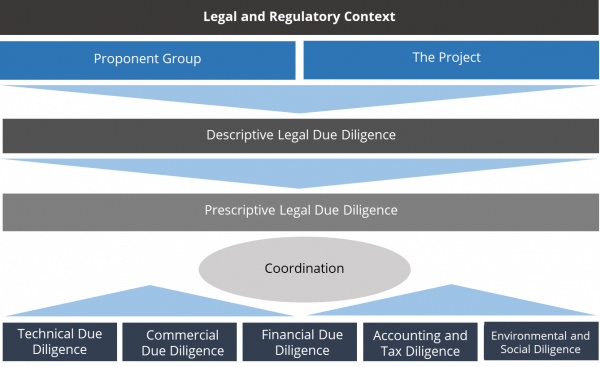Legal Due Diligence and Review in Asset Recycling

Photo Credit: Image by Pixabay
Legal due diligence in connection with an asset recycling transaction preparation covers the main topics listed below. Review of legal and regulatory context (in relation to the laws, regulations and policies affecting the asset owner and the transaction, as defined below); Legal due diligence (in relation to the Relevant Authority holding the asset and, to the extent relevant, its subsidiaries, affiliates, and joint ventures (collectively, the Relevant Authority Group), and any relevant enterprise-wide contractual arrangements; and Asset legal due diligence (in relation to the infrastructure asset, the project site and related supporting infrastructure and equipment, and related contracts and agreements (collectively, the Project)). Legal due diligence outputs should be provided in the form of a legal due diligence report from a qualified national and, as necessary, international legal counsel. Legal due diligence outputs should be both descriptive and prescriptive, as further described below. The legal due diligence reports (or portions of such reports) can be shared with potential bidders to facilitate and expedite bidder due diligence. Figure 4: Legal Due Diligence Coverage The relevant authority should pay attention to following aspects: Review of Legal and Regulatory Context; Conducting due diligence with respect to the legal and regulatory context requires a review of the laws, regulations and policies affecting the Relevant Authority and the asset. Descriptive Legal Due Diligence; Descriptive due diligence outputs are focused on describing the current legal aspects relevant to the Relevant Authority and the asset as at the review date. Prescriptive Legal Due Diligence; Prescriptive due diligence outputs are primarily focused on describing the legal aspects of structuring options in relation to the descriptive due diligence outputs.

The Guidelines have not been prepared with any specific transaction in mind and are meant to serve only as general guidance. It is therefore critical that the Guidelines be reviewed and adapted for specific transactions To find more, visit the Guidelines to Implementing Asset Recycling Transactions Section Overview and Content Outline, or Download the Full Report.
Updated:
TABLE OF CONTENTS
I. GUIDELINES FOR IMPLEMENTING ASSET RECYCLING
3. Guidelines for Asset Identification
Related Content
Additional Resources
Legal and Regulatory Issues Concerning PPPs
Due Diligence Checklist for Legal and Institutional Enabling Environment for PPP
Type of Resource